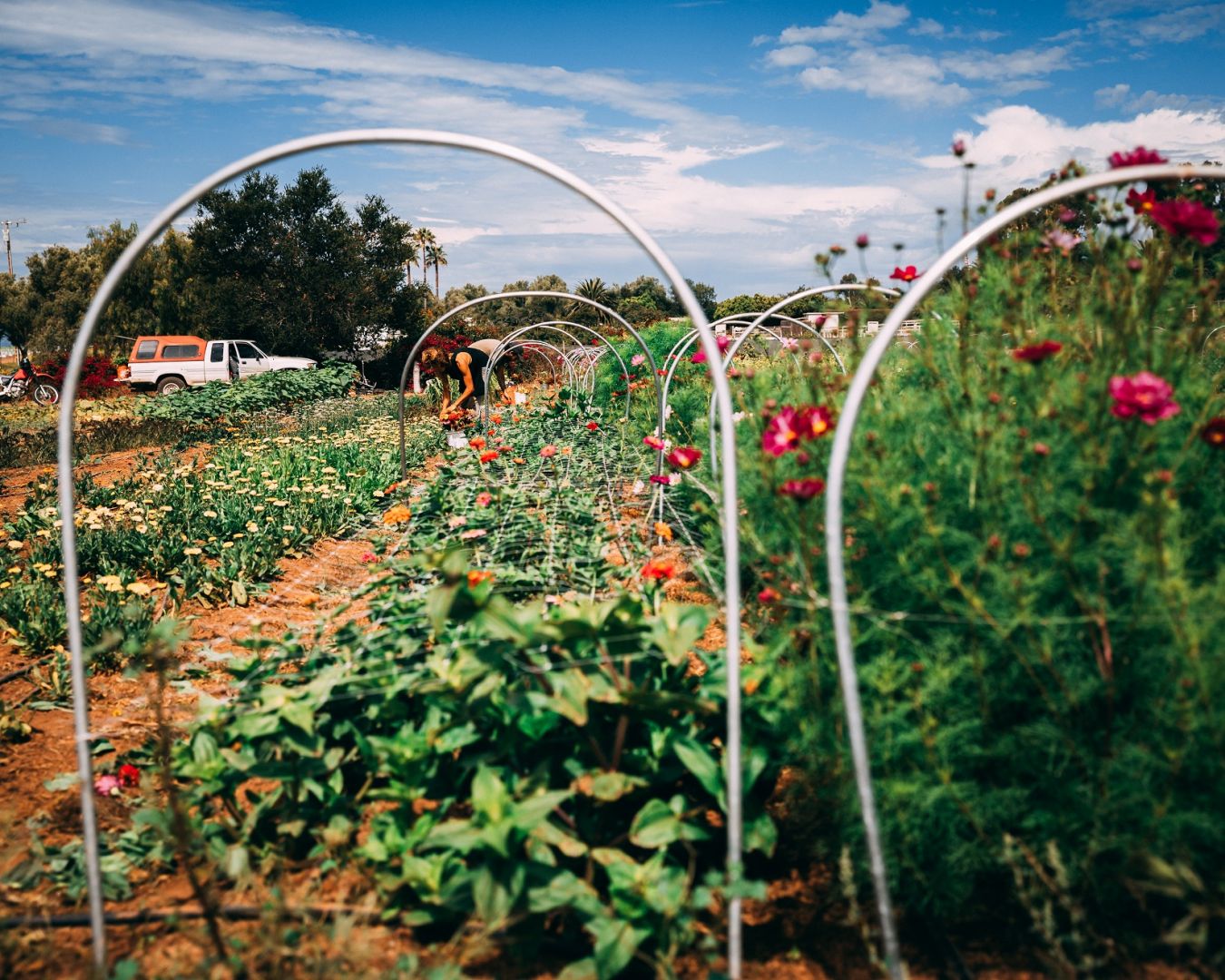Meet Alena Steen: farmer

We had the good fortune of connecting with Alena Steen and we’ve shared our conversation below.
Hi Alena, Let’s talk about principles and values – what matters to you most?
My partner and I are building a small farm in service to the other-than-human world. In practice, this looks like an incredible amount of biodiversity (more than 230 species of medicinal plants and cut flowers on one acre!), regenerative (non-certified) organic farming practices and a deep commitment to building healthy soil biology. This appreciation of a world beyond the simply human is also reflected in our small farm’s economy of slow growth and handcraft. We are working at nature’s pace to grow something sustainable and community-centered, with pollinators, migratory birds and soil microorganisms as a part of our cherished community.
This is important to both of us since we feel a grave concern for our planet’s wellbeing, and believe that creating a small farm that is part of a vibrant local economy is a meaningful way to contribute to a different vision of the future.
Let’s talk shop? Tell us more about your career, what can you share with our community?
I am a farmer and community herbalist growing plant medicine and cut flowers for local farmers markets and community-supported agriculture (CSA) members, folks who commit to a more long-term, seasonal relationship with the farm and its cycles of plant abundance. My partner and I run our tiny, one acre farm together.
I did not grow up on a farm, and didn’t work directly with plants until I was in college. I had a steep learning curve when I first began working on farms, since I didn’t have a lot of practical skills. I’ve learned so much from others, from plants and from trial and error. I’m sure I have lots of mishaps in common with other first-generation farmers.
I’ve learned a lot of patience in working at plant pace, in contrast to how fast our human world can move. It’s still sometimes really hard for me to relinquish my illusion of control, but farming works best with great humility and curiosity.
Let’s say your best friend was visiting the area and you wanted to show them the best time ever. Where would you take them? Give us a little itinerary – say it was a week long trip, where would you eat, drink, visit, hang out, etc.
The city closest to our fields is the small town of Carpinteria, about an hour and a half north of LA if the traffic isn’t bad. Carpinteria is pretty sleepy…some of my favorite things are:
birdwatching in the salt marsh, the last undeveloped coastal marsh in southern CA
hiking the Franklin Trail, which begins in the coastal mountains and continues into the backcountry and eventually the Los Padres National Forest
getting drinks at the Apiary, a tiny spot which serves house-made jun, cider and mead perched at the edge of the salt marsh
 Who else deserves some credit and recognition?
Who else deserves some credit and recognition?
I am so thankful to the many, many experienced gardeners and farmers who mentored me as I first began to work with plants as a teenager. I am also so grateful to the robust, wide-flung community of small-scale organic farmers around the world who share their knowledge gained from years of practical experience so generously online and in the many, many books on farming and soil-building that I lean on heavily in my daily work. And finally, I am so grateful to the infinitely generous plants, animals and insects themselves who have been some of my greatest teachers.
Website: www.nightheronfarm.org
Instagram: @nightheronfarm
Image Credits
Akasha Rabut, Kate Bowen
